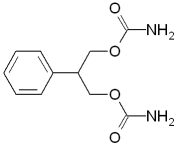The first new epilepsy drug treatment in more than 10 years received FDA approval July 29.
Felbatol (felbamate) can control certain epileptic seizures in adults and a rare form of epilepsy in children.
"[Felbatol] provides a new weapon against the debilitating effects of epilepsy," says FDA Commissioner David A. Kessler, M.D. "For those struggling to live with uncontrolled epilepsy, it offers the prospect of a more normal life."
A disorder marked by sometimes violent seizures, epilepsy affects about 2 million people in the United States. Many seizures cannot be controlled with existing drugs.
Felbatol decreases the frequency of partial seizures that start in a localized part of the brain, including those that progress into more generalized grand-mal seizures. For adults, Felbatol appears to be effective alone or combined with other anti-epileptic drugs.
Trials also showed the treatment to be safe and effective when used with other drugs in children 2 years and older with Lennox-Gastaut syndrome. This disorder affects about 50,000 children in the United States and is characterized by multiple types of seizures, mental retardation, and resistance to existing drugs.
Side effects with Felbatol include abdominal pain, dizziness, and vomiting. To help decrease side effects, doctors can adjust dosages of other anti-epileptic drugs used with Felbatol, as instructed in product labeling.
Clinical development of felbamate began in 1982 as part of the anti-convulsant program at the National Institutes of Health. An FDA advisory committee unanimously recommended the drug's approval in December 1992.
Wallace Laboratories, Cranbury, N.J., makes Felbatol.
COPYRIGHT 1993 U.S. Government Printing Office
COPYRIGHT 2004 Gale Group



